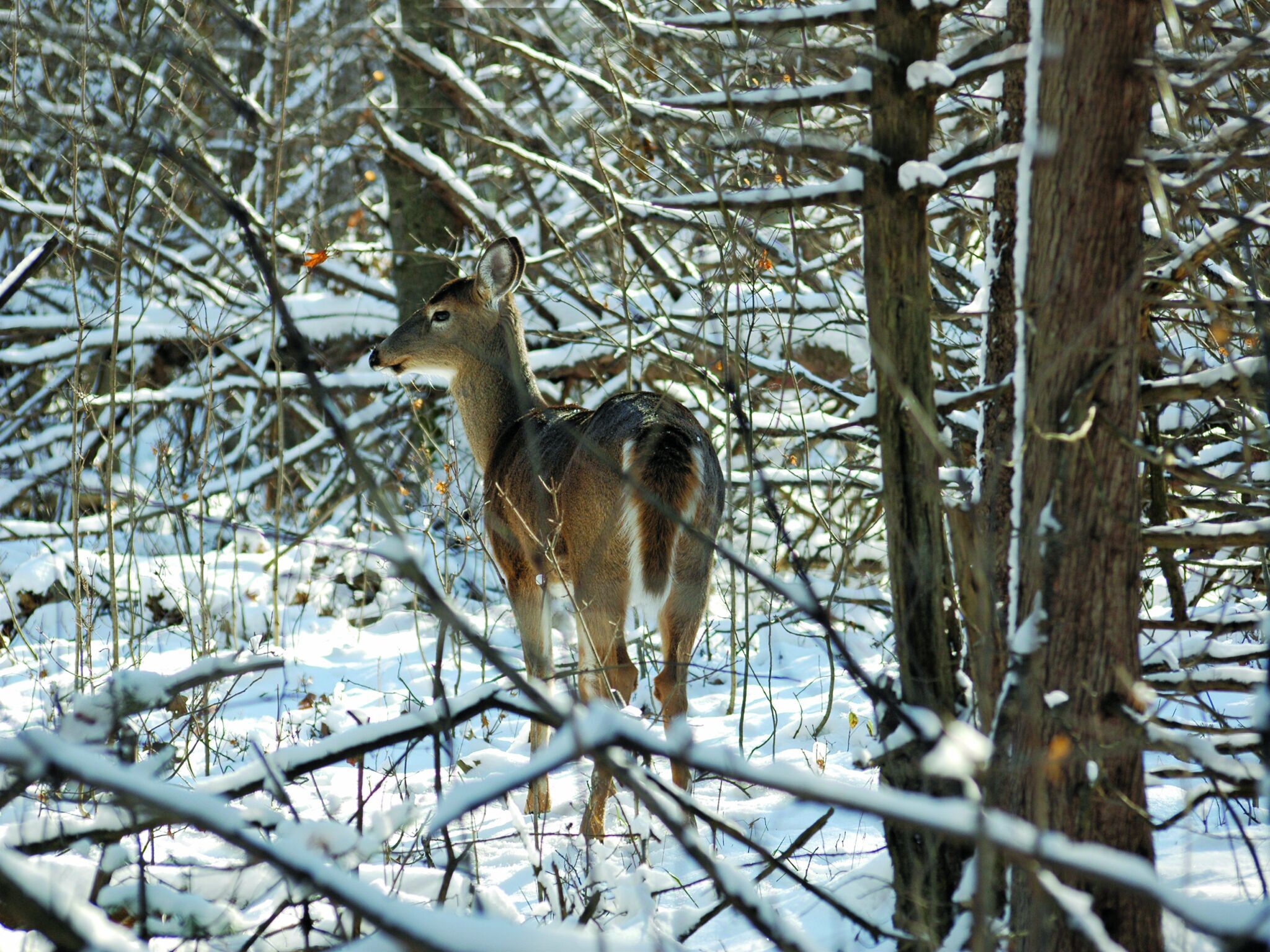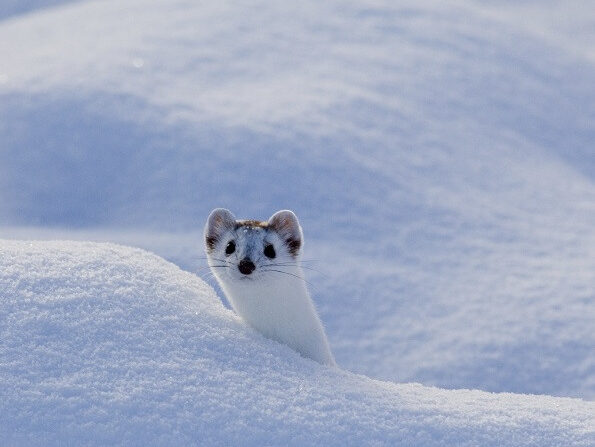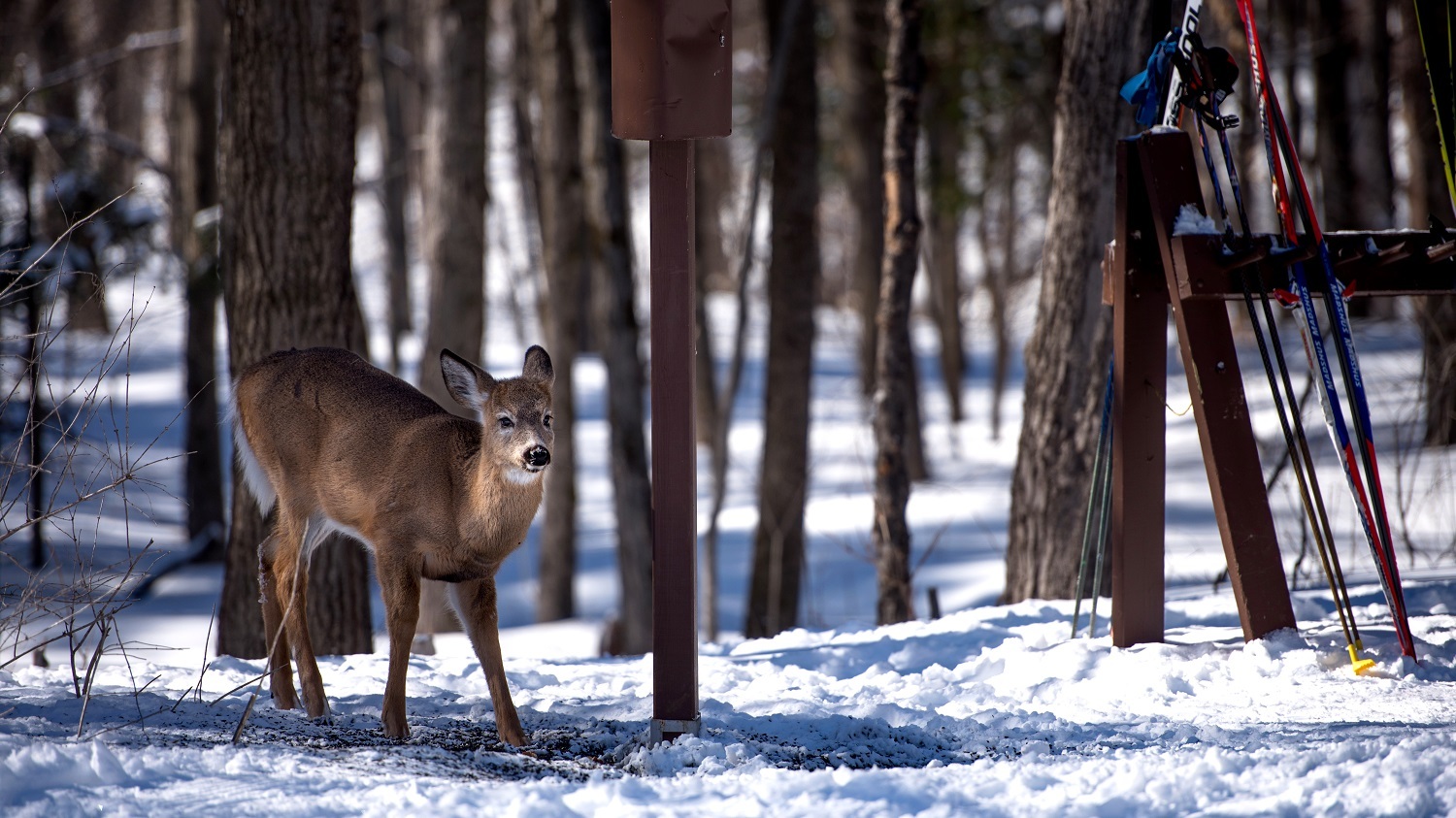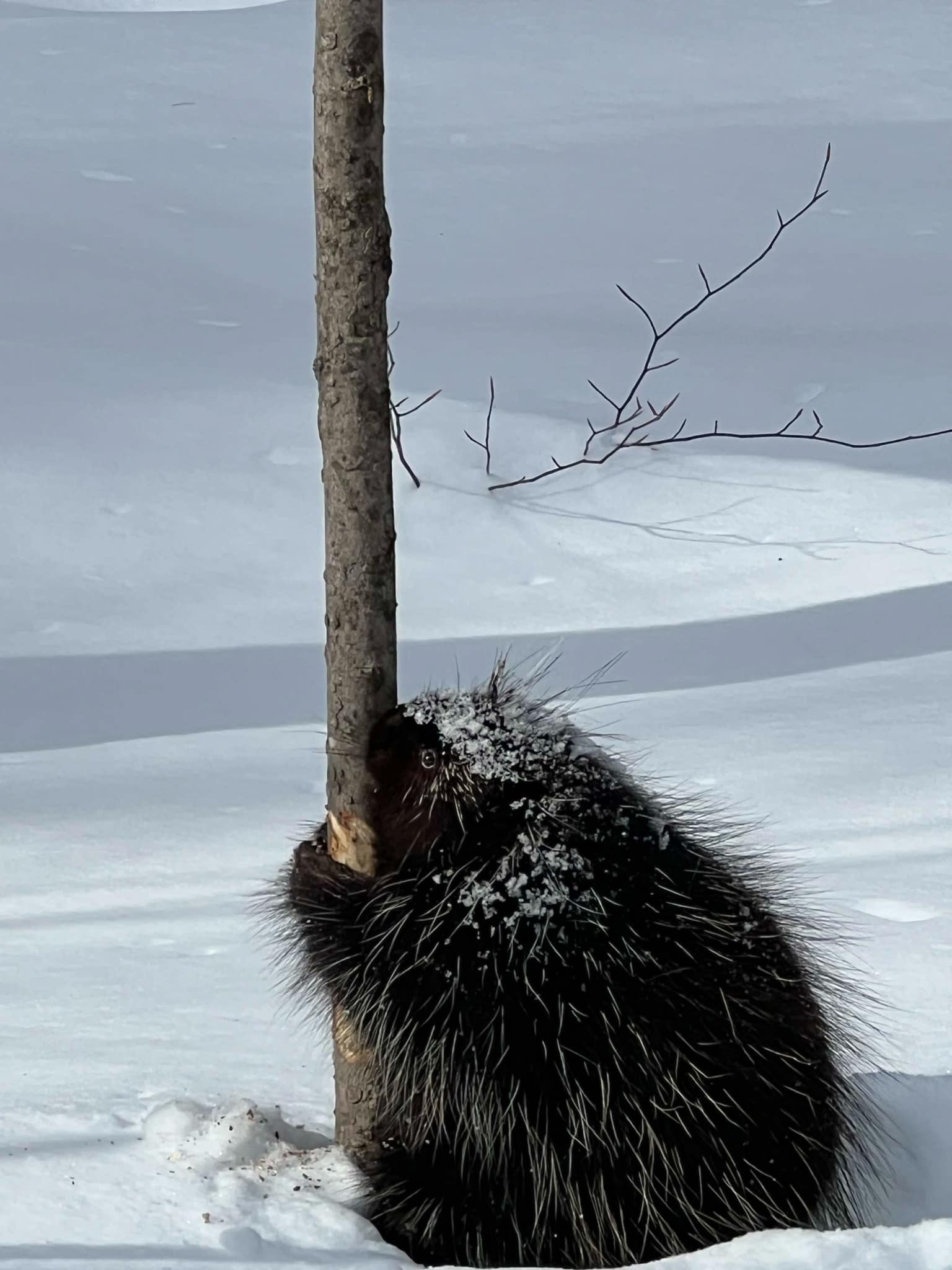
Winter presents a real challenge for wildlife and plants in Ottawa-Gatineau, including in conservation areas like Gatineau Park and the Greenbelt. How do plants and animals survive freezing temperatures, the lack of light and the scarcity of food?
How animals survive winter
Cold, snow and limited food make winter tough for animals. However, they have developed clever ways to cope. Some migrate, some hibernate, and others adapt.
Migration
Some animals survive winter by migrating, i.e., travelling to warmer areas where there is abundant food. Migration, however, isn’t easy. Animals must find enough food to sustain them on what can be a long journey.
Birds are well-known migrators, but did you know that other animals migrate too? Some species of bats, and even insects, like monarch butterflies, also travel long distances to escape the cold.
Hibernation
Animals that hibernate lower their body temperature, slow their heart rate, and reduce their metabolism to save energy. Their survival depends on the amount of body fat and food reserves they’ve stored before winter.
True hibernators, like frogs and groundhogs, do not wake up even if disturbed. Other animals, like bears and racoons, are “light” hibernators, and may wake up during warmer winter days.
Fun fact: The tiny chorus frog produces an antifreeze that prevents its cells from freezing.
Adaptation

The animals that stay in the Ottawa-Gatineau region year-round and remain active have developed various survival tactics. Adaptation methods vary by species, but a few examples include:
- Growing thicker fur or plumage
- Fur turning white, to camouflage in the snow
- Storing body fat
- Storing food in caches
- Building winter dens
- Searching for food under the snow
Here are some ways species adapt:
- Beavers build a dam to raise the water level, allowing them to swim under the ice to reach their food supply: branches at the bottom of the pond.
- White-tailed deer make their way to the Eardley Escarpment, where there is less snow. They follow the same paths, called deer yards, to get around, thus saving energy.
- Snowshoe hares don’t store body fat and instead feed on available plants throughout winter. Their large hind legs and feet help them stay on top of the snow (hence the name snowshoe hare), while their predators, like foxes and coyotes, sink into the snow, wasting precious energy.
- Ruffed grouses have found a way to keep warm while at the same time protecting themselves from predators. From atop a tree branch, they drop into the powdery snow below to camouflage and keep warm.
- Black-capped chickadees lower their body temperature at night to save energy in freezing temperatures.
How plants survive winter
Winter is difficult for animals, but also for trees and plants. Freezing temperatures make water scarce, as it turns to ice and is harder to access.

Plants have different ways of surviving until spring.
- Deciduous trees, like maples and oaks, shed their leaves to avoid dehydration.
- Coniferous trees, like pines, have dark green needles that help absorb the maximum amount of energy from the sun. Needles contain sweet sap that provides hydration, resin that acts as an antifreeze, and a waxy layer that helps keep water in.
- Herbaceous plants, like flowers and grasses, let their leaves and stem die. This helps their roots and bulbs save energy to grow new leaves and stems in the spring.
Fun fact: Trees produce buds in the summer, not in spring. They use the ample energy available during the sunniest months of the year to grow buds, which they protect with scales, hair or wax before winter. When spring arrives, the buds are ready to bloom.
Wildlife and plants have developed amazing ways of surviving the winter. The next time you visit Gatineau Park or the Greenbelt, keep an eye out for animal tracks, and remember to follow outdoor ethics. Staying on official trails, giving animals space and respecting dog guidelines are all good ways of supporting wildlife during the tough winter months.



